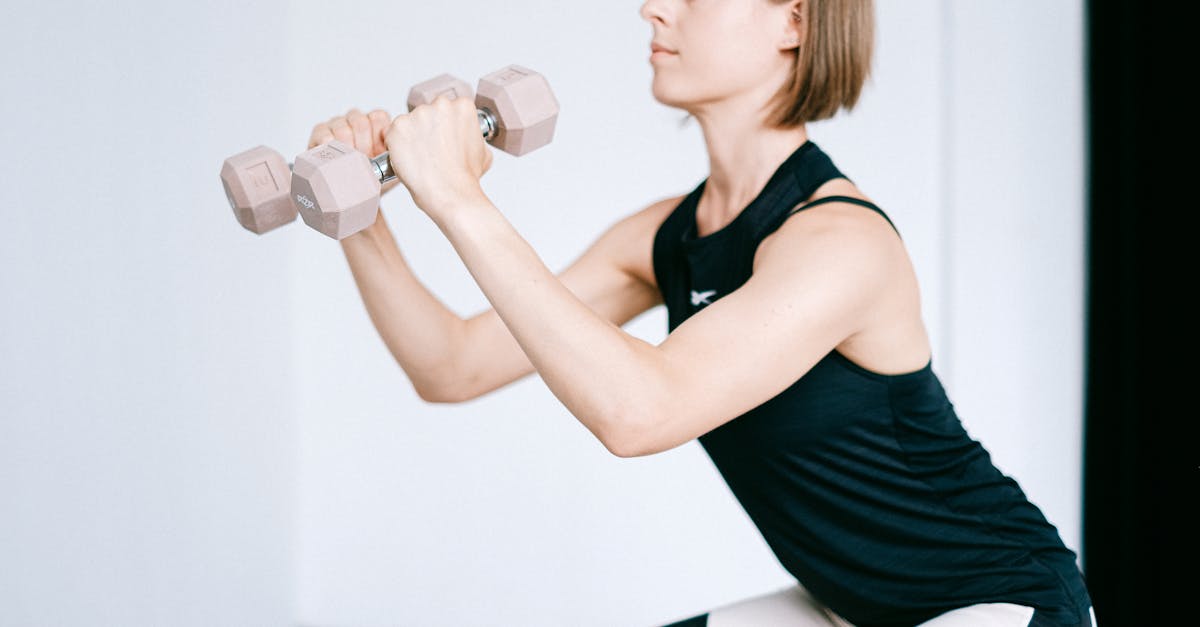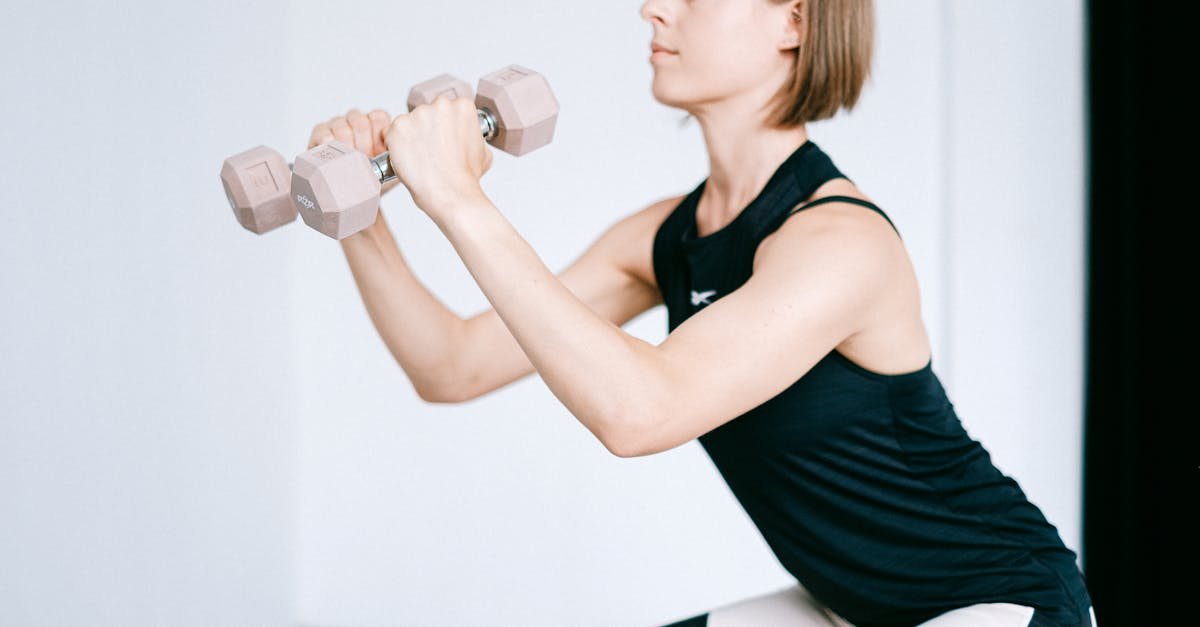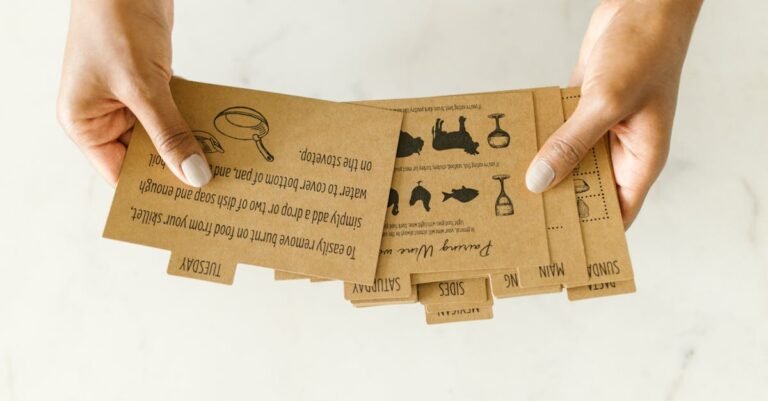Table Of Content
-
Quick Ab Workout Routine For A Strong Core
-
Why Bother With a Strong Core Anyway?
-
More Than Just Looks: The Real Benefits
-
Core Strength and Everyday Life: An Unexpected Connection
-
-
The Anatomy of Your Abs (Simplified!)
-
Meet the Key Players: Your Core Muscle Lineup
-
Rectus Abdominis: The “Six Pack” Muscle
-
Obliques: Your Twisting Powerhouses
-
Transverse Abdominis (TVA): Your Natural Corset
-
-
-
Designing Your Quick Ab Workout: Key Principles
-
Focus on Quality Over Quantity
-
Consistency is Your Secret Weapon
-
Listen To Your Body: Avoiding the Pitfalls
-
-
The Ultimate Quick Ab Workout Routine (Under 15 Minutes!)
-
Warm Up: Priming the Engine (Don’t Skip This!)
-
The Exercises: Let’s Get Moving!
-
Classic Plank: The Foundation Builder
-
Bicycle Crunches: Pedal Your Way to Strong Obliques
-
Leg Raises: Targeting the Lower Abs
-
Russian Twists: Whittle Your Waist
-
Bird Dog: Balancing Act for Stability
-
-
Cool Down and Stretch: Rewarding Your Muscles
-
-
Making Progress: Leveling Up Your Routine
-
Turning Up the Dial: Increasing Intensity
-
Adding a Challenge: Introducing Resistance
-
-
Common Mistakes to Avoid (Save Yourself Some Trouble!)
-
The Form Police: Why Sloppy Reps Don’t Count
-
Don’t Hold Your Breath! The Importance of Breathing
-
-
Nutrition and Core Strength: The Unspoken Partnership
-
Conclusion: Your Path to a Rock Solid Core Starts Now
-
Frequently Asked Questions (FAQs)
Article
Quick Ab Workout Routine For A Strong Core
Let’s be real, who doesn’t want a stronger core? Maybe you’re dreaming of that sculpted six pack, or perhaps you just want to feel more stable and powerful in your everyday movements. Whatever your reason, the good news is you don’t need to spend hours in the gym doing endless crunches. A quick, focused ab workout routine can be incredibly effective. Ready to build that rock solid core without dedicating your entire life to it? Let’s dive in!
Why Bother With a Strong Core Anyway?
Before we jump into the exercises, let’s talk about why a strong core is such a big deal. It’s easy to think it’s all about aesthetics, about looking good in a swimsuit. And sure, that can be a perk! But the benefits run so much deeper than just surface level appearance.
More Than Just Looks: The Real Benefits
Think of your core as the central power station of your body. It’s the bridge connecting your upper and lower body. When this bridge is strong and stable, everything else functions better. We’re talking about:
- Reduced Back Pain: A weak core often forces your lower back muscles to pick up the slack, leading to strain, aches, and pains. Strengthening your abs, obliques, and lower back muscles provides better support for your spine. It’s like giving your back a built in support system!
- Improved Posture: Slouching? A strong core helps you stand taller and sit straighter naturally, counteracting the effects of hunching over desks or phones all day. Good posture isn’t just about looking confident; it reduces stress on your spine and improves breathing.
- Enhanced Athletic Performance: Whether you’re a runner, swimmer, golfer, or weekend warrior, almost every athletic movement originates from or moves through your core. A strong core translates to more power, stability, and control in your chosen sport. Think about swinging a bat or kicking a ball – that power comes from the core!
- Better Balance and Stability: Your core muscles are crucial for keeping you upright and stable, reducing your risk of falls, especially as you age.
- Easier Everyday Activities: From carrying groceries and lifting kids to twisting to grab something or even just getting out of bed, a strong core makes daily tasks feel less strenuous.
Core Strength and Everyday Life: An Unexpected Connection
You might be surprised how often your core muscles jump into action without you even realizing it. Bending down to tie your shoes? Core engagement. Reaching for something on a high shelf? Core stability. Even sitting at your desk requires subtle core activation to maintain posture. It’s the unsung hero of your body, constantly working behind the scenes. When it’s weak, simple tasks can become harder, and the risk of injury increases. Investing a little time in a quick ab workout is really an investment in your overall quality of life.
The Anatomy of Your Abs (Simplified!)
Okay, let’s quickly peek under the hood. Understanding the main muscles you’re working can help you perform the exercises more effectively. Don’t worry, we’ll keep this simple – no complex anatomy lesson needed!
Meet the Key Players: Your Core Muscle Lineup
Your “core” isn’t just one muscle. It’s a whole group working together. For our quick ab workout, we’ll focus on these stars:
Rectus Abdominis: The “Six Pack” Muscle
This is the muscle most people think of when they hear “abs.” It runs vertically down the front of your stomach, from your ribs to your pelvis. Its main job is to flex your spine forward (like in a crunch) and stabilize your pelvis. While visible definition depends heavily on body fat percentage, strengthening this muscle is key for core function.
Obliques: Your Twisting Powerhouses
You have internal and external obliques located on the sides of your torso. They run diagonally and are responsible for twisting movements (like swinging a golf club or reaching across your body) and side bending. They also help stabilize your torso. Working your obliques contributes to a trimmer waistline and rotational strength.
Transverse Abdominis (TVA): Your Natural Corset
This is the deepest abdominal muscle, wrapping around your torso like a corset. You can’t see it, but it’s incredibly important! Its primary role is to stabilize your spine and pelvis, essentially sucking everything in and providing internal support. Engaging your TVA is crucial for protecting your back and creating a truly strong, functional core. Think of it as your body’s built in weightlifting belt.
Our workout will hit all these areas to ensure balanced development.
Designing Your Quick Ab Workout: Key Principles
Creating an effective quick ab workout isn’t just about picking random exercises and rushing through them. There’s a method to the madness!
Focus on Quality Over Quantity
This is paramount. Doing 10 perfectly executed reps is far more beneficial than blasting out 50 sloppy ones. Focus on feeling the target muscles contract and controlling the movement throughout the entire range of motion. Slow, controlled movements often yield better results and reduce the risk of injury. Forget ego lifting or racing against the clock; precision is power here.
Consistency is Your Secret Weapon
You wouldn’t expect to get fluent in a language by studying for 5 hours once a month, right? The same goes for building core strength. Doing a short, focused workout consistently (say, 3 4 times a week) will yield far better results than one mammoth session every blue moon. Consistency builds muscle memory, strengthens neural pathways, and allows your muscles to adapt and grow stronger over time. Make it a habit!
Listen To Your Body: Avoiding the Pitfalls
While consistency is key, pushing through sharp pain is not. Learn to distinguish between muscle fatigue (that good burn) and actual pain (a signal to stop). If an exercise causes discomfort, especially in your lower back or neck, check your form or modify the exercise. Rest days are also crucial for muscle recovery and growth. Don’t fall into the trap of thinking more is always better; smart training includes adequate rest.
The Ultimate Quick Ab Workout Routine (Under 15 Minutes!)
Alright, time for the main event! This routine is designed to hit your major core muscles efficiently. Aim to move smoothly from one exercise to the next with minimal rest in between to keep the intensity up. Remember quality over quantity!
Warm Up: Priming the Engine (Don’t Skip This!)
Never jump straight into intense exercise. A quick warm up prepares your muscles and reduces injury risk. Spend 2 3 minutes doing:
- Cat Cow Stretches: On hands and knees, alternate arching and rounding your back (5 10 reps).
- Torso Twists: Standing or seated, gently twist your upper body side to side (10 15 reps each side).
- Light Marching with Arm Swings: Get the blood flowing (30 60 seconds).
The Exercises: Let’s Get Moving!
Perform each exercise for the suggested duration or reps. Aim for 2 3 rounds of the entire circuit, resting for 30 60 seconds between rounds if needed.
Classic Plank: The Foundation Builder
Targets: Entire core, especially TVA and rectus abdominis, plus shoulders and back.
How to do it:
- Start in a push up position, but rest on your forearms instead of your hands. Elbows should be directly under your shoulders.
- Engage your core, glutes, and quads to create a straight line from your head to your heels. Don’t let your hips sag or pike up towards the ceiling. Imagine your body is a rigid plank of wood.
- Keep your neck in line with your spine – look down at the floor slightly ahead of your hands.
- Hold for 30 60 seconds. Breathe steadily!
Common Mistake: Letting the hips drop too low or raising them too high. Focus on maintaining that straight line.
Bicycle Crunches: Pedal Your Way to Strong Obliques
Targets: Rectus abdominis and obliques.
How to do it:
- Lie on your back with your hands lightly behind your head (don’t pull on your neck).
- Bring your knees towards your chest, shins parallel to the floor.
- Engage your abs to lift your head and shoulders slightly off the floor.
- Bring your right elbow towards your left knee while simultaneously straightening your right leg out.
- Switch sides, bringing your left elbow towards your right knee while straightening your left leg.
- Continue alternating in a controlled “pedaling” motion for 45 60 seconds or 20 30 total reps.
Common Mistake: Rushing the movement or pulling on the neck. Focus on twisting through your torso, not just moving your elbows.
Leg Raises: Targeting the Lower Abs
Targets: Rectus abdominis (especially lower portion), hip flexors.
How to do it:
- Lie flat on your back with your legs straight and together. Place your hands under your lower back/glutes for support if needed (this helps prevent your back from arching).
- Keeping your legs straight (a slight bend in the knees is okay if needed), engage your lower abs to slowly lift your legs towards the ceiling until they are perpendicular to the floor (or as high as you can control).
- Slowly lower your legs back down, stopping just before they touch the floor. Control the descent – don’t just let them drop!
- Perform 12 15 reps.
Common Mistake: Letting the lower back arch off the floor, or using momentum instead of muscle control. If your back arches, reduce the range of motion or bend your knees more.
Russian Twists: Whittle Your Waist
Targets: Obliques, rectus abdominis.
How to do it:
- Sit on the floor with your knees bent and feet flat on the ground (or lifted for more challenge).
- Lean back slightly, keeping your back straight (don’t round it), until you feel your abs engage. You should form roughly a V shape with your torso and thighs.
- Clasp your hands together in front of your chest.
- Slowly twist your torso to the right, tapping your hands (or just pointing) towards the floor beside your right hip.
- Twist back through the center and over to the left side. Follow your hands with your eyes and head.
- Continue alternating sides for 45 60 seconds or 20 30 total reps.
Common Mistake: Moving only the arms instead of twisting the entire torso, or rounding the back. Keep the chest up and rotate from the waist.
Bird Dog: Balancing Act for Stability
Targets: TVA, lower back, glutes, balance, coordination.
How to do it:
- Start on all fours, hands directly under shoulders and knees directly under hips. Keep your back flat (neutral spine).
- Engage your core to keep your torso stable – imagine balancing a glass of water on your back.
- Slowly extend your right arm straight forward and your left leg straight back simultaneously. Keep both parallel to the floor.
- Hold for a second or two, focusing on stability and avoiding any tilting or wobbling in your hips.
- Slowly return to the starting position.
- Repeat with the left arm and right leg. That’s one rep.
- Perform 10 12 reps total (5 6 per side).
Common Mistake: Arching the back when extending the leg, or letting the hips rotate. Keep the core tight and movements controlled.
Cool Down and Stretch: Rewarding Your Muscles
Don’t just stop abruptly! Finish with 2 3 minutes of gentle stretching:
- Cobra Stretch: Lie on your stomach, place hands under shoulders, and gently push your torso up, keeping hips on the floor. Feel the stretch in your abs. Hold for 15 30 seconds.
- Child’s Pose: Kneel, sit back on your heels, and fold forward, resting your forehead on the floor and extending arms forward or resting them alongside your body. Hold for 30 60 seconds.
- Spinal Twist (Supine): Lie on your back, bring one knee across your body, keeping shoulders flat. Hold for 20 30 seconds per side.
Making Progress: Leveling Up Your Routine
Once this routine starts feeling too easy (congratulations!), it’s time to progress. Sticking with the same thing forever leads to plateaus. Here’s how to keep challenging your core:
Turning Up the Dial: Increasing Intensity
The simplest ways to make the workout harder without changing exercises are:
- Increase Duration/Reps: Hold planks longer, do more reps of crunches, leg raises, and twists.
- Decrease Rest: Shorten the rest period between exercises and rounds.
- Add Rounds: Instead of 2 3 rounds, try doing 4.
- Slow Down the Tempo: Perform exercises more slowly, especially the lowering (eccentric) phase. This increases time under tension.
Adding a Challenge: Introducing Resistance
You can also make exercises inherently harder:
- Weighted Russian Twists: Hold a dumbbell, kettlebell, or even a water bottle while twisting.
- Plank Variations: Try plank jacks, plank with alternating arm/leg raises, or side planks.
- Leg Raise Variations: Try hanging leg raises if you have access to a bar.
- Resistance Bands: Incorporate bands for added resistance during certain movements.
Listen to your body and progress gradually. Don’t try to jump levels too quickly.
Common Mistakes to Avoid (Save Yourself Some Trouble!)
Even with simple exercises, mistakes can happen. Being aware of common pitfalls helps you maximize effectiveness and minimize injury risk.
The Form Police: Why Sloppy Reps Don’t Count
We touched on this, but it bears repeating: form is everything. Sacrificing form to get more reps or lift heavier is counterproductive. You risk injury (especially to your neck and lower back) and fail to properly engage the target muscles. If you’re unsure about your form, watch videos, use a mirror, or even record yourself. Slow down and focus on the mind muscle connection – really feel your abs working.
Don’t Hold Your Breath! The Importance of Breathing
It’s a common subconscious reaction to hold your breath during strenuous effort, especially with core work. Don’t do it! Holding your breath can increase blood pressure and reduce stability. As a general rule, exhale during the exertion phase (e.g., lifting up in a crunch, twisting, lifting legs) and inhale during the easier or returning phase (e.g., lowering down, returning to center, lowering legs). Keep your breathing steady and controlled throughout each exercise.
Nutrition and Core Strength: The Unspoken Partnership
You’ve probably heard the saying, “Abs are made in the kitchen.” While our quick workout builds the strength and muscle of your core, revealing visible definition (like that six pack) largely comes down to nutrition and reducing overall body fat. You can have the strongest abs in the world, but if they’re hidden under a layer of fat, you won’t see them.
Focus on a balanced diet rich in whole foods: lean proteins, complex carbohydrates, healthy fats, and plenty of vegetables. Stay hydrated and minimize processed foods, sugary drinks, and excessive calories. Combining consistent core training with sound nutritional habits is the winning formula for both a strong and defined midsection.
Conclusion: Your Path to a Rock Solid Core Starts Now
Building a strong core doesn’t require hours upon hours in the gym. This quick ab workout routine, performed consistently with good form, can deliver significant results. Remember, it’s not just about aesthetics; it’s about building a functional, resilient body that supports you through daily life and athletic pursuits. You’ve got the blueprint – focus on quality, stay consistent, listen to your body, and fuel it well. Your journey to a stronger, more stable core can genuinely start today, in just 15 minutes. So, what are you waiting for?
Frequently Asked Questions (FAQs)
1. How often should I do this quick ab workout?
Aim for 3 to 4 times per week on non consecutive days. Your muscles need time to recover and rebuild, so rest days are important. Listen to your body; if you’re very sore, take an extra day off.
2. How long will it take to see results from this routine?
Consistency is key! You might start *feeling* stronger and more stable within a few weeks. Visible changes (like definition) depend heavily on your starting point, body fat percentage, and diet. Combined with good nutrition, noticeable changes can often be seen within 4 to 8 weeks.
3. Can I do this workout if I have lower back pain?
If you have existing back pain, it’s crucial to consult your doctor or a physical therapist before starting any new exercise routine. Some core exercises can aggravate back issues if done incorrectly or if they aren’t suitable for your specific condition. Exercises like the plank and bird dog are often recommended for back health as they stabilize the spine, but proper form is critical. Modifications like performing leg raises with bent knees or limiting the range of motion might be necessary.
4. Do I need any equipment for this ab workout?
No! This routine is designed to be done using just your body weight, making it accessible anywhere, anytime. As you progress, you might choose to add weights (like dumbbells for Russian twists) or resistance bands for an extra challenge, but they aren’t required to get started.
5. Will this workout alone give me a six pack?
This workout will definitely strengthen your abdominal muscles (the rectus abdominis, obliques, and TVA). However, achieving a visible “six pack” requires low enough body fat percentage for those muscles to show through. Therefore, this workout combined with a healthy, calorie controlled diet and potentially some cardiovascular exercise is the most effective strategy for revealing defined abs.










